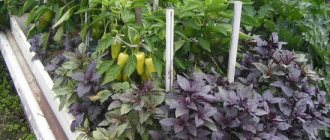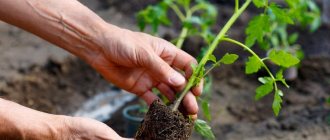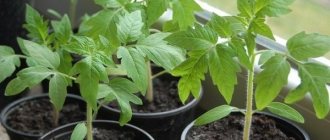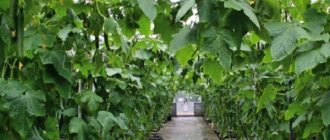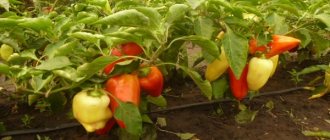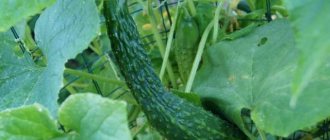Planting tomatoes next to peppers: advantages and disadvantages
Before choosing which plants to plant, you should consider some factors in which the crop grows and develops:
- Height of an adult bush. There should be enough light for all bushes of the crop.
- Obtaining the required amount of moisture.
- The temperature should be comfortable for the two plants.
Since tomatoes and peppers belong to the same Solanaceae family, their growing needs are approximately the same. But a high yield can be obtained with proper crop care.
On a note! In order for a vegetable bush to form well, it needs enough light, humidity and nutrients. In this case, the temperature should be optimal, without changes.
Also read what you can’t plant after pepper next year, but what, on the contrary, will give a good harvest.
Mutual effects of vegetables
Tomatoes and peppers require almost the same temperature of 22-28 °C. They require the same amount of moisture. The advantage of tomatoes for peppers is the release of phytoncides by tomatoes, which can repel various pests from the greenhouse. Tomatoes also limit the spread of aphids.
Both crops require a lot of nutrients and nutrients. Therefore, it is important to regularly and evenly feed the soil with them. The root system of each bush should not come into contact with the roots of neighboring plants.
Pros and cons of the neighborhood
The ability to save space in the greenhouse is one of the advantages. The positive aspects of such a neighborhood include the opportunity to get a decent harvest from two crops at the same time, because they have similar agrotechnical requirements.
The disadvantage of joint cultivation is the difficulty of maintaining different levels of air humidity. For tomatoes, it is important to regularly ventilate the greenhouse so that they are not affected by fungal diseases. But for peppers, on the contrary, ventilation is harmful.
Is it possible to plant peppers and tomatoes in the same greenhouse?
Growing vegetables in greenhouses allows you to get the harvest much earlier, protect against temperature changes, and also artificially create the necessary conditions for growing. To achieve a harvest, plants with similar agricultural technology requirements are combined in one greenhouse.
When choosing neighbors for a greenhouse, consider:
- Growth of grown crops. During the growing season, light must reach the plants equally.
- Need for hydration. The frequency of watering and the required level of humidity must match.
- The temperature should be similar.
Since peppers and tomatoes are nightshade plants, they can be planted nearby. Productivity depends on well-formed plantings and proper care.
Growing conditions
Although the plants belong to the same family, they have requirements for agricultural technology that differ slightly from each other.
| Conditions | Tomatoes | Peppers |
| Humidity | Seedlings do not require high humidity. Enough up to 60% | The seedlings are not picky and bear fruit at any humidity level |
| Watering | You should not overwater tomatoes; getting water on the tops has a bad effect on the plant. | If water gets on the leaves, there will be no harm to the vegetable; they like frequent watering |
| Ventilation | They like frequent ventilation and are not afraid of drafts | Do not tolerate drafts well |
| Temperature | Comfortable air temperature from +22 °C | Optimum temperature + 27°C. This figure is also suitable for growing peppers in open ground. |
Mutual influence of tomatoes and peppers
When planting tomatoes and peppers in the same greenhouse, it is necessary to take into account the nuances of interaction between crops. In particular:
- Conditions for caring for vegetables differ. After irrigating plants, water evaporates and remains in the atmosphere. Tomatoes and peppers produce good yields with high water content in the air, but tomatoes will require periodic aeration.
- When planning a planting scheme, it is better to place peppers closer to the far walls of the greenhouse. This way, the tomatoes will be provided with air flow from the entrance to the greenhouse, and the peppers will be located in warm conditions.
- The gap between different vegetables should be about 1 m. At a closer distance, the roots and foliage of the plantings will absorb nutritional components from each other.
- If you plant pollinating vegetables next to varieties that need pollination, the crops will help each other better form ovaries and produce crops.
Preparatory activities
In order for the plants to be comfortable and not interfere with each other’s normal development, it is necessary to choose the right varieties, prepare the soil, and also choose the right scheme for planting peppers along with tomatoes.
Place and diagram for planting with division of the greenhouse
You can plant peppers next to tomatoes in a greenhouse made of film or polycarbonate. It must be of an appropriate height (up to 2 meters) to allow the tomato bushes to fully grow.
You can divide the greenhouse into two zones using film, where two crops are planted at the same time. It must be stretched over the entire height of the greenhouse: from the ground to the ceiling. This will create optimal microclimates in each zone.
On a note!
You should not plant hot and sweet peppers in the same area. This will result in the entire crop being bitter due to cross-pollination.
Planting without separation
There are several options for planting greenhouse tomatoes and peppers without dividing the greenhouse into zones. One of them is to plant peppers along the walls, where the plant will receive more heat. Moreover, there are fewer drafts there. In the center, the air flow during ventilation is stronger, so beds with tomatoes can be placed here. Moreover, they will not shade peppers that are shorter.
You can also plant vegetable crops in a checkerboard pattern. First, you need to plant tomatoes, and after 14-20 days, pepper seedlings are planted between them. When removing the lower shoots from tomatoes, each bush receives a sufficient amount of light.
Variety selection
For planting plants in the neighborhood, it is best to use hybrid varieties of vegetable crops. If the greenhouse is small, then varieties of tomatoes that grow tall and short varieties of peppers are planted nearby.
For peppers these are the following varieties: Fakir, Apricot favorite, Lastochka, Albatross, Isabella, Chanterelle or Timoshka. The following varieties of tomatoes can be planted with peppers: Typhoon, Evpator, Aksinya, Pablo or Zhenaros.
Soil preparation
In order for the planted seedlings to produce results, it is necessary to prepare the soil in advance. To do this, you should feed it with all the necessary microelements and minerals. It is also recommended to add peat to the soil, which will retain heat, so loved by these two plants.
The soil composition should include clay soil, to which humus, peat and sawdust are added in equal quantities. The amount of substrate depends on the size of the greenhouse: 3 buckets are enough for 1. The soil itself should be slightly moistened and loosened.
On a note!
Saturating the soil with peat is especially important when planting tomatoes and peppers in a greenhouse occurs in February - early March. At this time there is still a chance of frost occurring.
Organization of landing
Proper delimitation of space is one of the important conditions for growing together. They also take care of organizing the correct microclimate. If it is not possible in the greenhouse to organize a separate bed for each crop, then choose another option.
We separate cultures with film
The easiest way to delimit space between crops is to use a partition, for example, made of plastic film. Install it from the ground to the roof. Thanks to the overlap, they create a comfortable microclimate for peppers and tomatoes.
The film impedes the flow of air. Personal exits are organized for the zones, preferably at the ends of the beds.
It is important not only to delimit the space, but also the soil. The beds are made so that they are located on different sides (a passage is made between them). If this does not work, then separate the roots with slate or metal.
Growing without divisions
Plant peppers and tomatoes without stretching the film. Correctly distribute the greenhouse space. Pepper is placed in the southern part of the greenhouse, as it loves warmth.
Tomatoes are planted in the northern and central parts. The plant is not afraid of drafts; they can be safely placed near openings. You can additionally plant radishes, garlic, and beans in such a greenhouse.
On a note!
When planning a greenhouse, bitter peppers are never placed next to sweet varieties. Also, do not plant cucumbers and eggplants together.
Pest and disease control
Dangerous parasites and diseases can interfere with the normal growth and development of vegetable crops. Therefore, you should know what problems may arise during cultivation and how to properly deal with them.
You may be interested in:
Growing tomatoes, peppers and eggplants together For some reason, not all gardeners think about how to properly place beds in a garden or greenhouse. Meanwhile,…Read more…
Aphid damage
These pests love succulent bushes that contain a lot of water. Aphids begin to cause damage at the end of summer. It sucks out all the beneficial juices from the plant, stops their growth, which leads to withering and death of the seedlings. In addition, aphids attract ants and can infect the bushes with a virus.
If you carefully inspect the seedlings, you can detect the pest in time and get rid of it. Aphids live on the underside of leaves, on young stems or on the tops of a bush.
Effective drugs for pest control are “Healthy Garden” or “Fitoverm”. Instructions for use are written on the packaging. The drugs take effect on the second day. “Fitoverm” is also capable of increasing the immunity of the crop due to the absorption of the drug into the plant juice. Using the drug you can destroy other pests. Valid for up to three weeks.
Slug attack
Comfortable conditions for breeding slugs and snails are a moist, shaded environment in a greenhouse. Insects spoil stems, leaves and fruits, and carry various fungal and infectious diseases.
You can prevent the appearance of slugs using slate, which is installed between the beds. Over the course of the entire day, a sufficient number of parasites will accumulate on it, which can be easily destroyed by turning the slate upside down. There is no need to remove dead slugs, since after them other slugs will come and eat them and will not have time to get to the leaves of the crop.
You may be interested in:
About growing cucumbers, peppers and tomatoes together in a greenhouse It is known that the growth of a vegetable crop is influenced by those neighbors who are nearby. There is even a separate gardening science...Read more...
Pests
If you grow peppers next to tomatoes, there is a risk of simultaneous pest damage to the crops. The most common species that spread are aphids and slugs.
Aphid
Most often attacks at the end of summer. Pests settle on the back side of the leaf and feed on the sap of the plant.
The “Healthy Garden” drug is excellent for combating aphids. The contents of the package are diluted with water strictly according to the instructions. The resulting solution is sprayed onto the plants. The treatment is carried out in the evening. After just two days, not a trace of pests will remain if the procedure was carried out without errors.
The drug “Iskra Bio” demonstrates good performance in the fight against aphids. It is also diluted in water according to the instructions and sprayed on plants. In addition to immediate action, Iskra Bio allows you to protect plants for three weeks from repeated attacks by pests. It affects not only aphids, but also other insects.
On a note!
Already 3 days after treatment with Iskra Bio, the fruits are safe for use for food purposes.
Slugs
They especially love to feast on peppers. If characteristic holes and tunnels appear on the fruits, then it’s time to fight the parasites.
For this purpose, slate walls are built between the plants. It will take slugs a long time to get over the barrier. In the evening you can check the traps and destroy the pests. It is better not to remove crushed slugs. The next evening, the remains will delay their relatives and they too can be destroyed. Such actions will help get rid of pests in 3-4 days.
Peppers and tomatoes can be grown in the same greenhouse. Obtaining a decent harvest is possible only with a reasonable approach to planning the beds inside the greenhouse, careful selection of seed material and properly organized crop care. The compatibility of vegetables is not bad, but if you ignore some nuances, you can lose part of the harvest.
Care instructions
Although these two vegetable crops belong to the Solanaceae family, their care is not the same. Following this, it is important to know and adhere to all the rules depending on the plant variety.
Proper feeding and watering
Since tomatoes do not like strong moisture, it is enough to water them once every 5 days. Peppers, on the other hand, love moisture, so it is recommended to keep the soil slightly moist. It is better to water in the morning or evening hours, when the sun is not very hot.
Seedlings should be fed 14 days after they are planted in the greenhouse. It is necessary to fertilize:
- phosphate fertilizers;
- nitrogen, potassium fertilizers;
- nutritional supplements in the form of folk remedies.
On a note!
Nutrient additives are used only in conjunction with mineral and organic fertilizers. This can be humus from rotted leaves, manure or wood ash.
Proper pinching and pinching
Pepper growth begins with seedlings whose height has reached 15 cm. The side shoots, the first flower bud and the top are considered superfluous. Pruning side shoots allows you to get strong stems where the fruit will form. Removing a flower bud allows you to avoid the bush from producing an inhibitor, which prevents the vegetable from growing large and juicy. And trimming the top speeds up the ripening of the vegetable, and the bush will bear fruit longer. This should be done at the end of the growing season.
Pinching tomatoes allows you to direct all the nutrients to the stems, which will then bear fruit. In addition, this will remove excess leaves on the bush and ensure good air circulation with sufficient light. Pinching is done when the flowers of the upper inflorescence open. It is enough to leave 5 brushes on the main stem. After pinching, two leaves should remain above the inflorescence.
Rules for hanging and choosing a support
For tomato varieties that grow tall, it is important to build a support to which they can be tied as they grow. It is necessary to drive stakes along the edges of the bed, using twine to tie the stems of the plant to the support. Hanging should be carried out when the vegetable crop is grown in a non-standard way (for example, in bottles).
Suitable varieties for growing together
Placing several crops in one greenhouse has both positive and negative sides. Growing tomatoes and peppers at the same time is beneficial, first of all, due to space savings - for each crop you do not need to build a separate greenhouse.
The disadvantage of joint cultivation is the different care of the plantings. Plants require an individual approach, and violation of agricultural practices can lead to deterioration in fruiting and loss of part of the harvest.
Soil preparation
In addition to the correct selection of compatible varieties and choosing the required planting pattern, before growing tomatoes and peppers in the same greenhouse, you need to consider the following points:
Long before planting both plants in the soil, it is extremely important to take care to fully enrich it with the nutrients they need; Since both of these species belong to crops that prefer greenhouse conditions, the soil before planting should be saturated with peat, which retains heat well;
Important! This circumstance must be given special attention in cases where both species are planted at the end of winter (February), when there is a high probability of severe frosts on the soil.
To obtain an abundant and high-quality harvest of tomatoes, you will also need to carefully monitor all the nuances of the process of shrub formation, which involves its correct pinching; When growing a crop compatible with tomatoes, such as sweet peppers, the formation of its bush is usually neglected, which is explained by the peculiarities of the growing season of this low-growing plant.
On the contrary, increased attention is paid to all the subtleties of its watering and feeding, since they play a decisive role in the successful development and fruiting of this type of vegetable
Proper care
The correct procedure for caring for jointly grown crops, first of all, lies in the correct watering of the bushes of these plants, in which primitive laws must be observed. It was not particularly difficult for enterprising amateur gardeners to “discover” them in their time.
So, when the pepper is abundantly moistened, the spilled moisture should be properly distributed, so that the stream of water is directed only under the bush (it should not fall on its foliage at all). This rule must also be followed at such a crucial moment in development as the flowering period.
To obtain the expected volume of harvest from both plants, accompanied by the collection of aromatic and plump fruits, the following types of fertilizers will be required to feed them:
- Phosphate baits (superphosphate, in particular);
- Main types of nitrogen and potassium chemicals;
- Folk remedies used as nutritional supplements.
Note! The so-called “folk remedies” are used in this case as additives to the main types of mineral and organic fertilizers. In this particular situation, they mean household waste such as wood ash, manure, well-rotted leaves (humus) and compost mixed with a small amount of peat
For the most part, they are all prepared in the form of aqueous solutions, which are subsequently filled into small containers. The latter are used for periodic watering of the sprouts of both plants, both during their active growth and during transplants
In this particular situation, they mean household waste such as wood ash, manure, well-rotted leaves (humus) and compost mixed with a small amount of peat. For the most part, they are all prepared in the form of aqueous solutions, which are subsequently filled into small containers. The latter are used for periodic watering of the sprouts of both plants, both during their active growth and during transplants.
Sweet and hot varieties should not be planted side by side, otherwise cross-pollination will occur and pods with bitterness will grow on the sweet pepper bushes.
The distance between the beds should be at least 30 m. If the size of the plot is limited, you can plant tall plants (for example, tomatoes) between the beds. This will reduce the risk of cross-pollination.
You cannot plant sweet and hot vegetables in the same greenhouse.
Reviews
Alexander
I have never tried to plant tomatoes and peppers next door. I always plant peppers and cucumbers. Their growing conditions are more similar than tomatoes. But I’m not afraid of experiments, so next season I’ll definitely try to combine these two vegetable crops and plant them in the same greenhouse. I’ll just immediately divide it into zones, so, it seems to me, the likelihood of getting a high yield is higher.
Tamara
I have two greenhouses on my site in which I like to grow a variety of vegetables, which are not always suitable for each other under agricultural conditions. I have been growing peppers and tomatoes for the second year in a row. I divide the greenhouse into two sections with plastic film and don’t see any problems in growing it. Each plant receives the conditions that are necessary, and we get a healthy and tasty harvest.
In a greenhouse, you can grow many vegetable crops, which may be completely compatible in terms of agrotechnical characteristics, or may not be quite similar. The main thing is to correctly distribute the position of the beds and choose the right varieties. Tomatoes and peppers can easily coexist in the same greenhouse. To get a high yield, you need to approach each plant individually.
Greenhouse cohabitation: rules of care
Vegetables living in the same greenhouse require especially careful care. The top layer of soil is replaced annually; before planting, the soil is spilled with a solution of copper sulfate or potassium permanganate. The soil is fertilized with humus, wood ash and a small dose of mineral fertilizer (superphosphate, potassium sulfate) are added to it.
If seedlings are grown in a greenhouse, it is better to allocate a separate area for them. When transplanting seedlings to a permanent location, it is important to make sure that they are completely healthy.
If pest larvae or signs of disease are detected, the seedlings must be cured and only then moved to the greenhouse.
Early maturing hybrids are more suitable for co-location. They are productive and disease resistant. For prevention, young plantings are treated with a weak solution of potassium permanganate, and during planting growth they are sprayed with phytosporin or other non-toxic biological preparations.
Plants planted in one greenhouse can do very well without reducing their yield. It is important to closely monitor their condition in order to take timely measures in case of problems. Next year, you can make adjustments to the plantings taking into account the experience gained.
Alternation of crops
Crop rotation, or alternation of crops, is a necessary measure to maintain soil fertility, reduce the number of weeds on the site, and prevent the accumulation of foci of diseases and parasites.
The crop turnover is usually 2-3 years.
This is due to the fact that the organic matter added to the listed crops has time to rot well. The soil becomes loose and contains the optimal amount of nutrients for the pepper.
After tomatoes, eggplants, potatoes and other plants belonging to the nightshade family, pepper grows reluctantly.
The explanation for this is simple: all these crops take the same nutrition from the soil and are susceptible to the same diseases and pests.

